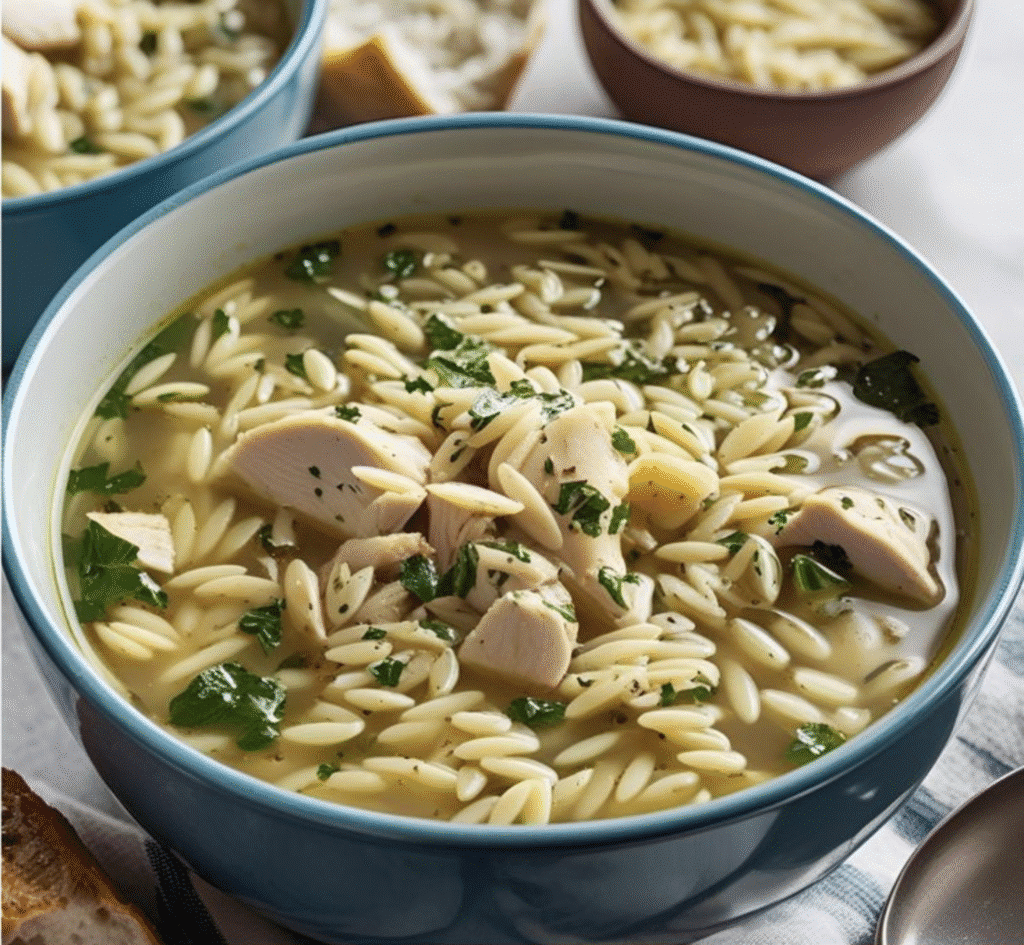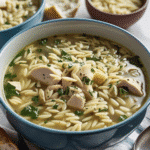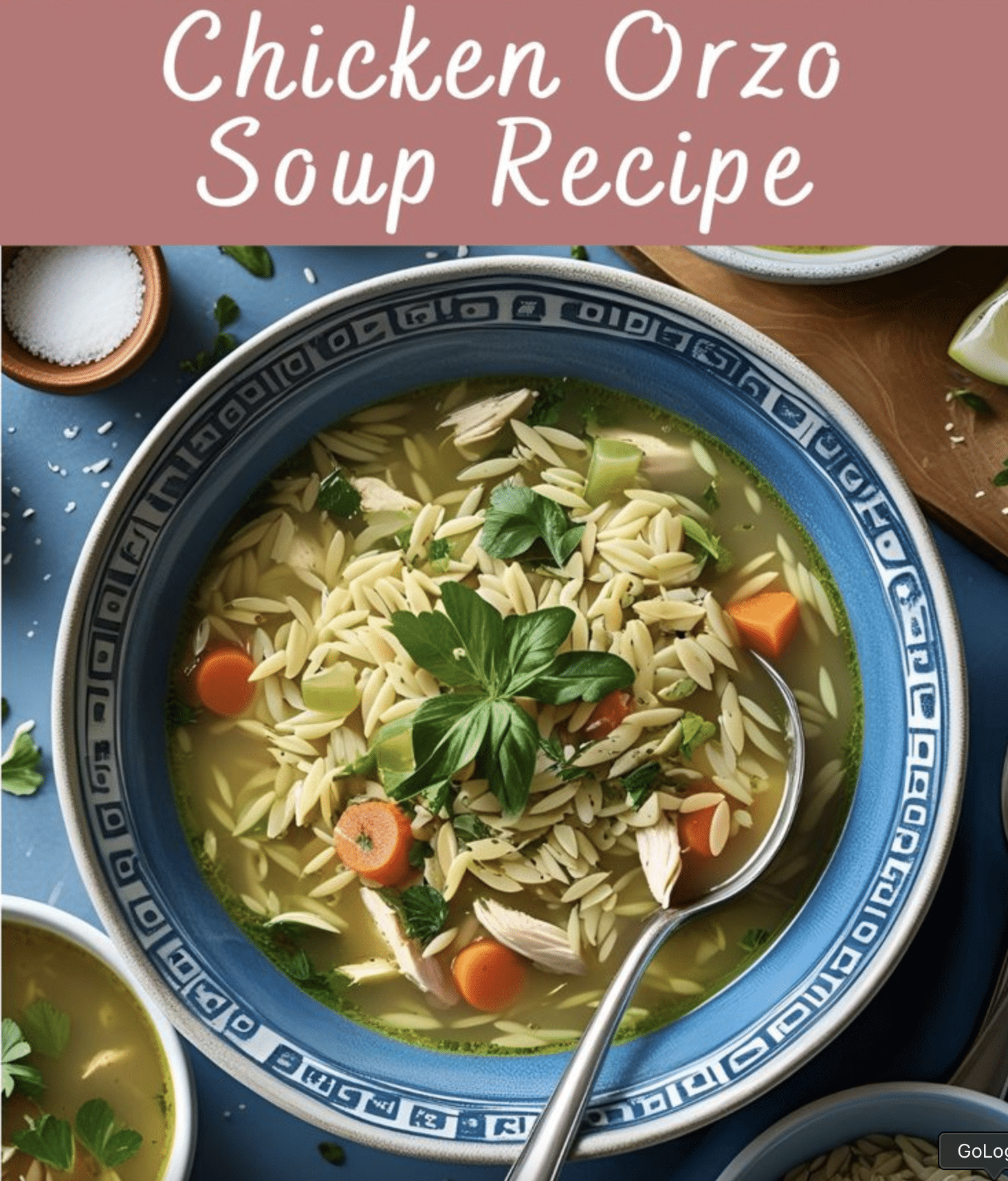
Homemade Pasta Dish: A Flavorful Family Favorite
This homemade pasta dish brings restaurant-quality flavors to your kitchen with minimal effort. The rich sauce clings perfectly to al dente noodles while fresh herbs add brightness. Moreover, the recipe works well for weeknight dinners yet feels special enough for guests. You will love how the ingredients come together to create layers of taste in every bite.
Many home cooks hesitate to make pasta from scratch but this recipe simplifies the process. In fact, the dough requires just four basic ingredients and no special equipment. The sauce builds flavor gradually starting with aromatic garlic and finishing with grated cheese. As a result, you get a balanced dish that pleases both kids and adults alike.
Quick Recipe Highlights
- Flavor Profile: The dish features a savory umami base with herbal top notes and a subtle tang from tomatoes. Garlic and onion form the foundation while fresh basil adds freshness.
- Texture: Al dente pasta provides the ideal chew while the velvety sauce coats each strand perfectly. You get occasional bursts of texture from vegetable additions.
- Aroma: When cooking, the kitchen fills with the scent of toasting garlic and simmering tomatoes. Fresh herbs release their fragrance just before serving.
- Visual Appeal: The vibrant red sauce contrasts beautifully with green herbs and white cheese. Twisted pasta shapes catch the sauce in their crevices.
- Skill Level Needed: Basic knife skills and the ability to multitask in the kitchen will yield great results. The recipe includes clear visual cues for each step.
- Special Equipment: A large pot for boiling pasta and a heavy-bottomed skillet for sauce suffice. No fancy gadgets required.
Recipe Overview
- Difficulty Level: Intermediate home cooks will find this recipe approachable with its detailed instructions. Beginners may need practice with timing the pasta doneness.
- Category: This versatile dish works as a main course or substantial side. It fits Italian-inspired menus particularly well.
- Cuisine: The recipe draws from traditional Italian techniques but uses widely available ingredients. Regional variations might include different herb combinations.
- Cost: Most ingredients fall into the pantry staple category, making this an economical choice. Fresh herbs represent the only perishable investment.
- Season: While excellent year-round, the dish shines in summer with garden-fresh tomatoes and herbs. Winter versions can use quality canned tomatoes.
- Occasion: Perfect for casual family meals yet elegant enough for dinner parties. The recipe scales easily for larger gatherings.
Why You’ll Love This Recipe
The balanced flavors make this pasta dish universally appealing. First, the sauce develops deep complexity through simple techniques like sweating aromatics and reducing liquids. Second, the fresh ingredients maintain brightness against the rich base. Furthermore, the recipe accommodates various dietary needs with easy substitutions.
Convenience stands out as another major advantage. You can prepare components ahead then assemble quickly at mealtime. The dish also reheats well for leftovers. Additionally, most ingredients stay shelf-stable so you can keep them on hand for last-minute meals.
Nutritionally, the recipe provides plant-based protein and fiber from the pasta. Olive oil contributes heart-healthy fats while tomatoes offer antioxidants. When you include vegetable additions, the nutritional profile improves further. Consequently, the dish satisfies hunger while delivering beneficial nutrients.
For entertaining, this pasta performs beautifully. The vibrant colors photograph well and the aroma welcomes guests. You can customize portions easily and accommodate various dietary restrictions. Plus, the recipe leaves you time to socialize rather than being stuck in the kitchen.
Cost-effectiveness makes this recipe practical for regular rotation. Basic ingredients keep the price low while technique elevates the results. Compared to restaurant versions, homemade preparation saves significantly. You also control ingredient quality and portion sizes.
Historical Background and Cultural Significance
Pasta dishes trace back centuries in Italian culinary tradition. Originally, dried pasta provided reliable nutrition during long sea voyages. Over time, regional variations developed based on local ingredients. The combination with tomato sauce emerged after tomatoes reached Europe from the Americas.
In Italian culture, pasta represents both everyday sustenance and celebratory fare. Family recipes pass through generations with subtle variations. The simplicity of ingredients highlights quality and technique. Traditional preparations emphasize seasonal availability and respect for ingredients.
The evolution of pasta dishes reflects global trade and cultural exchange. Early versions used only flour and water. Later, eggs enriched the dough in some regions. Tomato-based sauces gained popularity in the 18th century. Today, fusion versions incorporate ingredients worldwide.
Regional differences showcase local agricultural products. Northern versions often feature butter and cream while southern recipes favor olive oil. Coastal areas incorporate seafood while inland regions use meat and mushrooms. These variations demonstrate adaptability to available resources.
Ingredient Deep Dive
Durum wheat semolina forms the ideal base for pasta dough. This hard wheat variety contains more protein than all-purpose flour, creating better structure. The golden color comes from natural carotenoids. When milled properly, semolina yields dough with perfect elasticity and toothsome texture when cooked.
San Marzano tomatoes rank among the best for sauce preparation. Grown in volcanic soil near Naples, these plum tomatoes offer balanced acidity and sweetness. Their thick flesh breaks down beautifully during cooking. While premium canned versions work well, you can substitute other ripe tomatoes in season.
Extra virgin olive oil contributes fruity notes and healthy fats. Cold-pressed versions retain more antioxidants and flavor compounds. The oil helps carry fat-soluble flavors from garlic and herbs throughout the sauce. Quality olive oil makes a noticeable difference in the finished dish.
Common Mistakes to Avoid
- Overcooking pasta results in mushy texture. Always taste a minute before package directions suggest.
- Adding oil to pasta water prevents sauce from adhering properly. Use plenty of salt instead for flavor.
- Overcrowding the pan when sautéing lowers the temperature too much. Cook in batches if necessary.
- Using pre-grated cheese often contains anti-caking agents that affect melting. Grate fresh for best results.
- Skipping the pasta water reserve makes saucing difficult. The starchy water helps emulsify the sauce.
- Adding garlic too early risks burning its delicate flavor. Introduce it after onions soften.
- Underseasoning leaves flavors flat. Season in layers throughout cooking.
- Rinsing cooked pasta removes surface starch needed for sauce adhesion. Drain but don’t rinse.
Essential Techniques
Proper pasta cooking requires attention to timing and texture. First, use abundant rapidly boiling water to prevent sticking. Salt the water generously to season from within. Stir occasionally during cooking to ensure even doneness. Most importantly, reserve some starchy cooking water before draining.
Sauce development builds flavor systematically. Begin by gently sweating aromatics to release their essence. Next, concentrate tomato flavor through careful reduction. Finally, incorporate pasta water to create a silky emulsion. The sauce should lightly coat the back of a spoon when ready.
Pro Tips for Perfect Homemade Pasta Dish
- Time your sauce and pasta to finish simultaneously for ideal texture.
- Undercook pasta slightly as it will finish in the sauce.
- Toast garlic briefly to remove raw edge without burning.
- Add fresh herbs at the end to preserve their vibrant flavor.
- Toss pasta with sauce off heat to prevent overcooking.
- Let the plated dish rest briefly before serving for flavors to meld.
Variations and Adaptations
Regional variations offer inspiration for customization. A Neapolitan version might include anchovies and capers for briny depth. Roman adaptations often feature guanciale or pancetta. Sicilian interpretations could add eggplant and ricotta salata. These variations demonstrate the recipe’s flexibility.
Seasonal adaptations keep the dish fresh year-round. Spring versions might feature peas and young garlic. Summer showcases ripe tomatoes and basil. Fall welcomes mushrooms and sage. Winter adaptations could use roasted squash or hearty greens. The basic technique adapts to whatever looks best at the market.
Serving and Presentation Guide
Traditional Italian service keeps presentation simple yet elegant. Use warm shallow bowls to maintain temperature. Twirl pasta into nests using tongs for visual appeal. Garnish sparingly with fresh herbs and a drizzle of oil. Serve immediately while perfectly al dente.
Modern plating might incorporate colorful vegetables as accents. Consider edible flowers for special occasions. Individual portions allow for customized garnishes. Family-style service in a large bowl encourages sharing. Always provide extra cheese and chili flakes for personal preference.
Wine and Beverage Pairing
Medium-bodied red wines complement the dish beautifully. Chianti’s acidity cuts through the richness while Sangiovese’s cherry notes harmonize with tomatoes. For white lovers, Vermentino offers enough body to stand up to the flavors. Sparkling water with lemon makes a refreshing non-alcoholic choice.
Storage and Shelf Life
Store leftovers in airtight containers for up to three days. The sauce alone freezes well for two months. Reheat gently with a splash of water to refresh texture. Avoid microwave reheating which can make pasta rubbery. For best quality, consume within 24 hours.
Make Ahead Strategies
The sauce improves when made a day ahead as flavors meld. Prepare dough in advance and refrigerate wrapped tightly. Blanch vegetables ahead for quicker assembly. Have all ingredients prepped and measured before cooking. These steps streamline the cooking process when serving.
Scaling Instructions
Doubling the recipe works well with a few adjustments. Use two pans for sauce to maintain proper evaporation. Cook pasta in batches to prevent overcrowding. For large groups, consider baking the finished dish to keep warm. Halving requires careful attention to sauce reduction rates.
Nutritional Deep Dive
This balanced dish provides complex carbohydrates for energy and plant-based protein. Olive oil contributes monounsaturated fats while tomatoes offer lycopene. Whole wheat pasta versions increase fiber content. Portion control maintains calorie balance while still satisfying.
Dietary Adaptations
Gluten-free pasta works with proper cooking adjustments. Vegan versions can omit cheese or use nutritional yeast. For lower carb, try spiralized vegetables instead of pasta. Dairy-free adaptations might use olive oil instead of butter. The basic recipe adapts to most dietary needs.
Troubleshooting Guide
If sauce seems too thin, simmer longer to reduce or add a pasta water slurry. For broken sauce, whisk in more reserved water. Overcooked pasta benefits from quick chilling in ice water. Bland flavors may need salt, acid, or umami boosters like anchovy or mushrooms.
Frequently Asked Questions
Can I use dried herbs instead of fresh? While fresh herbs provide superior flavor, you can substitute dried at one-third the amount. Add them earlier in cooking to rehydrate.
What’s the best pasta shape for this dish? Shapes with ridges or holes like penne or rigatoni catch sauce well. Long noodles like spaghetti work too when properly sauced.
How can I make the sauce creamier? Stir in a splash of heavy cream or stir in some starchy pasta water vigorously to emulsify.
Can I freeze the finished dish? The sauce freezes well but pasta texture suffers. Freeze sauce separately then cook fresh pasta when ready to serve.
What vegetables work well as additions? Mushrooms, zucchini, bell peppers, and spinach all complement the flavors nicely. Add them according to cooking times.
Additional Resources
For those wanting to explore further, consider Italian cooking technique books. Pasta-making classes offer hands-on experience. Farmers markets provide seasonal ingredient inspiration. Quality cookware makes the process more enjoyable. Food science resources explain the why behind techniques.
Print
Garlic Butter Shrimp Pasta
Description
A creamy and flavorful garlic butter shrimp pasta that’s quick and easy to make for a delicious weeknight dinner.
Ingredients
For the Crust:
- 8 oz fettuccine pasta
- 1 lb large shrimp, peeled and deveined
- 4 cloves garlic, minced
- 1/4 cup unsalted butter
- 1/2 cup heavy cream
- 1/4 cup grated Parmesan cheese
- 1 tsp red pepper flakes
- Salt and black pepper to taste
- 2 tbsp fresh parsley, chopped
Instructions
1. Prepare the Crust:
- Cook pasta according to package instructions until al dente. Drain and set aside.
- In a large skillet, melt butter over medium heat. Add garlic and sauté until fragrant, about 1 minute.
- Add shrimp and cook until pink and opaque, about 2-3 minutes per side. Stir in heavy cream, Parmesan, red pepper flakes, salt, and black pepper. Simmer for 2-3 minutes until slightly thickened.
- Toss cooked pasta with the shrimp and sauce until well coated. Garnish with fresh parsley before serving.
Notes
You can customize the seasonings to taste.
I’m Shaykee—born in Morocco, seasoned across continents. From airplane galleys to home kitchens, I share the flavors and stories that shaped my journey.

